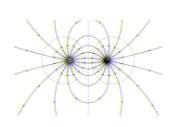Logic gates are the main building blocks of any digital circuit. They are provided with one or more than one input based on which they provide an output. When the logic requirements of input are satisfied, they provide outputs in 1s and 0s. There are many logical gates; each of them has distinct functions and symbols. The types of logic gates are AND gate, OR gate, NOT gate, XOR gate, NAND gate, NOR gate, and XNOR gate. Among them, AND, OR, and NOT gates are known as the basic logic gates. The rest of the gates are a combination these gates.
Binary and Decimal number system
We need to know the history of binary and decimal numbers first if we want to know about the truth tables of logic gates. The decimal numbers contain digits from 0 to 9 and have a base system of 10. On the other hand, the binary number system has only 1 and 0 and has a base system 2. Computers and logic gates use binary systems as input and output. The number 1 denotes the high signal or high voltage, and 0 represents the low signal or low voltage. Therefore, logic gates use binary signals to perform logical decisions.
Basic Logic Gates examples
The three basic logic gates are:
1.AND Gate
An AND gate takes two inputs and gives only one output. It performs the multiplication function on the inputs. If it is provided with two inputs, that is, 1 and 0, then the output will be 1 only when both the inputs are 1. Otherwise, the output will be 0. If A and B are the inputs and O is the output, the expression for AND gate is:
O = A.B
The truth table for AND Gate is given below:
A B O
0 0 0
0 1 0
1 0 0
1 1 1
2.OR Gate
OR gate is an important gate that performs the addition function on the inputs provided to it. It can take two or more inputs and gives out only one output. The output will be 0 only if both the inputs are 0. Otherwise, the output will be 1. If A and B are the inputs provided and O is the output, the expression for OR gate is:
O = A + B
The truth table for OR gate is:
A B O
0 0 0
0 1 1
1 0 1
1 1 1
3.NOT Gate
Among all the logic gates, the NOT gate is said to be the simplest one. It takes only one input and, hence, gives out one output. The function it performs is the inversion function. When an input is given to the NOT gate, it gives the output as the reverse of the input. If A is the input provided and O is the output, the expression for NOT gate will be:
O = A’
The truth table for NOT gate is:
A O
0 1
1 0
Basic Logic gate uses
Full adder is an example of how the logic gates are used. It takes three inputs to give two outputs. It performs addition on the provided data. If we compare this to analogue circuits, we can say that it is very fast and the process is finished within seconds. BCD adder and half adder are other types of adder applications that digital channels use. Logic gates are combined together in a number of ways and patterns, and these combinations are further used to make advanced gadgets.
Basic logic gates are often used in circuits such as burglar alarms, push-button locks, street lights, and other electronic devices. Logic gates are often mixed with other logic gates to perform advanced operations. There is no limit on the number of these gates that can be used in a device. Still, it is limited because of the physical space within the device.
Conclusion
Logic gates are the major building blocks of a digital circuit. They perform logical operations by using the inputs given to them and giving outputs based on certain rules. Different types of logic gates are used to perform different operations such as AND gate is used to perform multiplication, OR is used to perform addition, and NOT simply reverses the input that is given to it. These logic gates are used in every digital device that we use in our daily lives whether it is a computer, a phone, an alarm, etc. These simple logic gates are used in different combinations to perform more complex operations.
 Profile
Profile Settings
Settings Refer your friends
Refer your friends Sign out
Sign out







